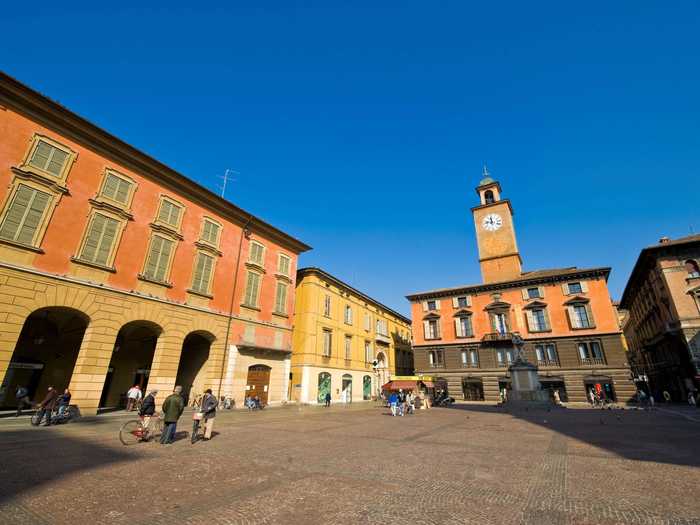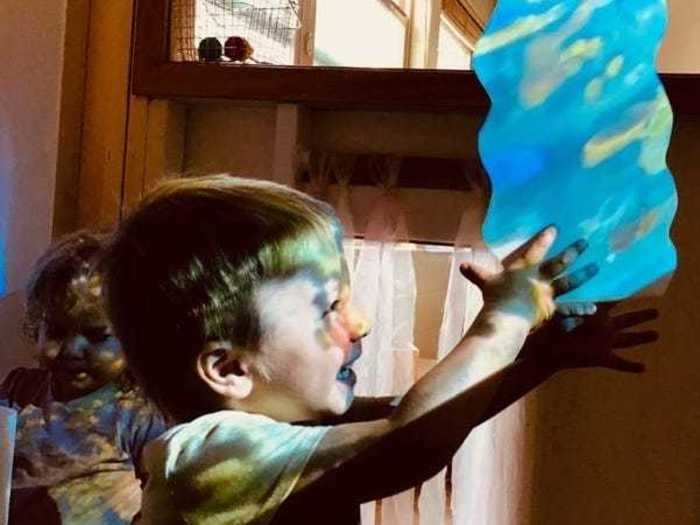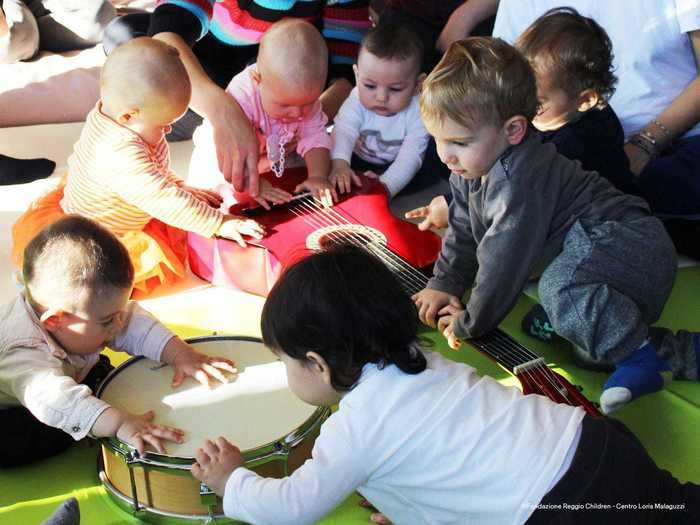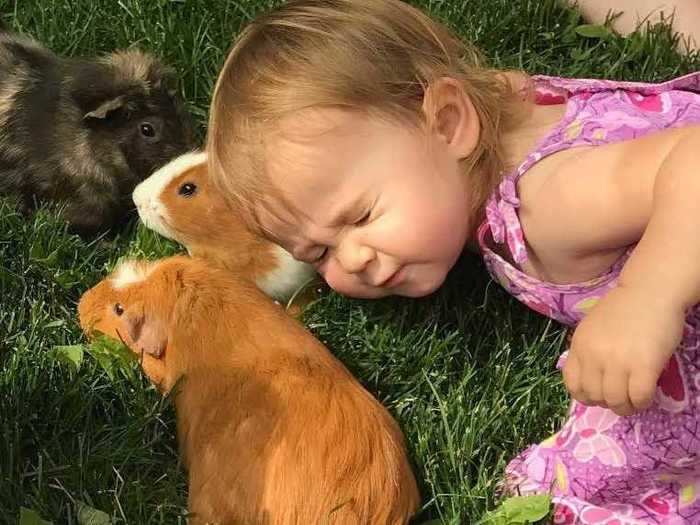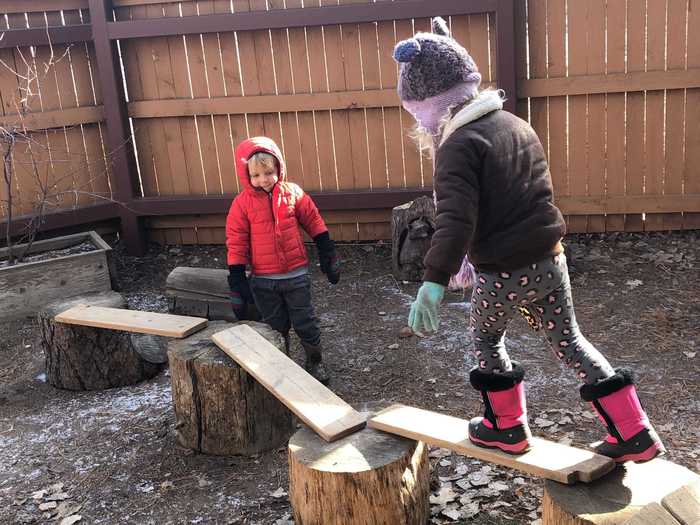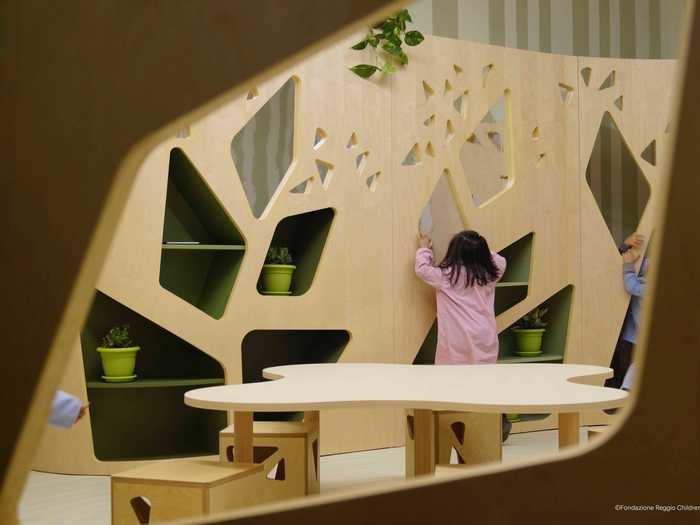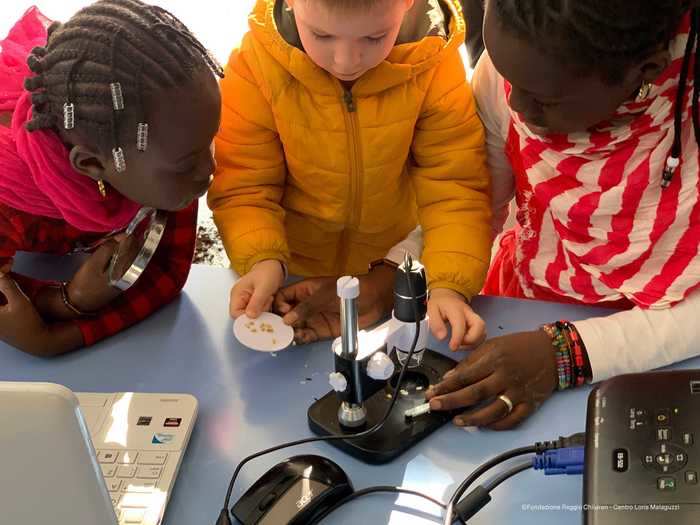The classroom is filled with unusual and multipurpose tools and supplies that invite children to ask questions.Fondazione Reggio Children - Centro Loris Malaguzzi
- In preschools across the world, "Reggio Emilia" is now synonymous with an educational approach that gives children autonomy over how they learn.
- The model was developed after World War II by Loris Malaguzzi, a philosopher and resident of Reggio Emilia, a small city in northern Italy.
- Malaguzzi believed that investing in a progressive preschool model, which encouraged collaboration and creativity, could help the devastated city rebuild itself.
If it weren't for Loris Malaguzzi, Reggio Emilia — a hamlet in northern Italy — would be most famous for being the birthplace of the country's flag. But because of the visionary philosopher, the small city is now synonymous with a progressive preschool model that's gained popularity worldwide.
Malaguzzi first introduced his groundbreaking preschool concept after World War II while Italy lay in ruins.
That's when Malaguzzi, based in Reggio Emilia, called for an investment in — and an overhaul of — early education to breathe life into the devastated city.
At Malaguzzi's preschools, children were placed at the center of the program, and given some autonomy over what, and how, they learned. They would "learn, live and grow together in freedom," said Carlina Rinaldi, president of Fondazione Reggio Children, an organization that works to promote children's rights through education.
The concept began with 54 public schools that supported babies through six-year-olds. Those who got involved at the ground up were able to "regenerate an idea of education, community and democracy," Rinaldi added.
Because Malaguzzi's philosophy was an approach — not a strict educational method — it was nimble enough for schools of varying socio-economic, religious, cultural, and academic backgrounds to adopt.
In the '60s and '70s the Reggio Emilia method started to move beyond Italy, Rinaldi said. By the '80s, early educators around the world praised the concept for its commitment to innovation. Today, it's the foundation for early education centers across the globe.
Here's what the Reggio Emilia method is and how children benefit from it.
Only preschools located in Reggio Emilia can get the official certification.
Reggio Emillia, is a small city in northern Italy, where the eponymous preschool concept was developed.
Getty
Only preschools based in the birthplace of the approach can get the official Reggio Emilia certificate.
That hasn't stopped preschools across the globe from incorporating the concepts.
It just means that preschools outside of Italy are "inspired" by the ideas and that there are no official global Reggio Emilia figures.
The main concept is that a child has inherent rights and an ability to decide how to learn.
A student at Boulder Journey School plays with a light structure.
Boulder Journey School
At the heart of the Reggio Emilia philosophy is the idea that a baby comes into the world with inherent rights. They have the ability to relate to others and to communicate what they would like to learn. That's why a school is supposed to serve as a facilitator, and should be able to adapt to a child's needs and creative inclinations.
"The child is viewed as a citizen who has worthy contributions to both the curriculum and the community," said Alison Maher, executive director of Boulder Journey School, a Reggio Emilia-inspired preschool in Boulder, Colorado.
Reggio Emilia schools don't subscribe to a regimented curriculum, because the students help drive the lessons.
Children at a Reggio Emilia school are given free rein to explore instruments.
Fondazione Reggio Children - Centro Loris Malaguzzi
In traditional preschools, the day, and the school year, follow a predictable plan. Students likely complete the same worksheets, sing the same songs, and engage in the same projects that the children years before them did.
But at preschools inspired by the Reggio Emilia approach, there is no prescribed curriculum and lesson plans aren't repeated year after year, said Maher.
While there are certain benchmarks for children to reach by graduation, there isn't a standardized method to reach them.
"The curriculum is developed in partnership with children through a process of observation, documentation, and through collaboration," Maher told Insider.
At any point, children can suggest an idea for learning or play. Teachers and students will then discuss how — and whether — to implement it.
A child at Boulder Journey School plays with the school's two guinea pigs.
Boulder Journey School
Because there's no regimented curriculum, children are encouraged to express what they want to pursue and accomplish.
At one point last year, a few children at the Boulder Journey School came up with the idea to build a racetrack for the school's two guinea pigs. The educators agreed and the students spent several weeks learning about different tools and materials in order to construct the track.
Once it was completed, the children joined together for the racing event, Maher said.
At another point, the children spent time at a local restaurant, documenting what they saw and how the establishment was run. The children discussed what they observed and then built their own model eatery out of clay.
"It's not about saying 'yes' to the children," Maher said. "We're engaging them in the problem solving process so that they can understand how to live peacefully as a member of a community."
Brainstorming sessions help equip children to advocate for themselves.
Children play outside at Boulder Journey School.
Boulder Journey School
If a child isn't ready to go inside after recess, for example, the student and teacher will discuss the child's options. If other students are open to it, the teacher might allow some kids to stay outside, while the rest head back to the classroom. Or, the child might join another group that's still at the playground.
These negotiations arm children with the skills to speak up for what they want in a respectful, and compelling way.
"The students at our school are used to being heard. They're very good at advocating for themselves," Maher said. "They're developing a sense of self and an awareness of how they can solve problems with others. That's something that can never be taken away from them."
There are three teachers central to instructing the children: Parents, educators, and the classroom.
The classroom is considered the "third teacher" in Reggio Emilia classrooms.
Fondazione Reggio Children - Centro Loris Malaguzzi
Because the physical space in which children learn plays such an essential role in the process, Reggio Emilia schools tend to deviate from the traditional classroom setting.
A standard preschool classroom may be drenched in primary colors — bright reds, yellows, and blues. The walls are usually plastered with purchased materials, and traditional alphabet and numerical posters.
"Everything is simplified and that reflects a weak image of the young child," Maher said of a typical classroom. "The Reggio approach is based on a strong image of the child and so the environments are much more complex."
Those "complex" materials include fine art, reclaimed, and natural materials, as well as, tools, and modern technologies. While a Reggio Emilia classroom might have Crayola markers and crayons, they may also have charcoals and watercolor pencils, Maher said.
"We're trying to amplify possibilities because children — humans actually — learn through experience," Maher added.
Reggio Emilia classrooms also incorporate multipurpose materials and supplies that pique children's curiosities and possibilities.
The classroom is filled with unusual and multipurpose tools and supplies that invite children to ask questions.
Fondazione Reggio Children - Centro Loris Malaguzzi
To enable children to contribute to the course of the learning and the day, Reggio Emilio classrooms incorporate materials that are open-ended and have varying possibilities, Maher said.
"They can do more than one thing," Maher said of what's available in the classroom, "which then leaves space for the children's contributions to impact the way that they're using the materials."
A projector is an example of a classroom tool that offers extensive possibilities. Younger children dance in front of it to make shadows. Older children hook webcams to projectors and "build small worlds" that are then projected on the wall for them to physically interact with," Maher said.
Children learn in small groups where they’re able to stimulate and uplift one another.
Learning in small groups is a key aspect of the Reggio Emilia approach.
Fondazione Reggio Children - Centro Loris Malaguzzi
During the school day, children will inevitably gravitate to different activities. Teachers will encourage small groups of children to collaborate and teachers might pair children with varying skill sets together so that they can each build off one another's strengths and learn from each other.
"That really increases the quality of learning," Maher said. "It looks playful and it is playful. You learn through play. But there's a depth and complexity to the learning that's happening in the classroom."

